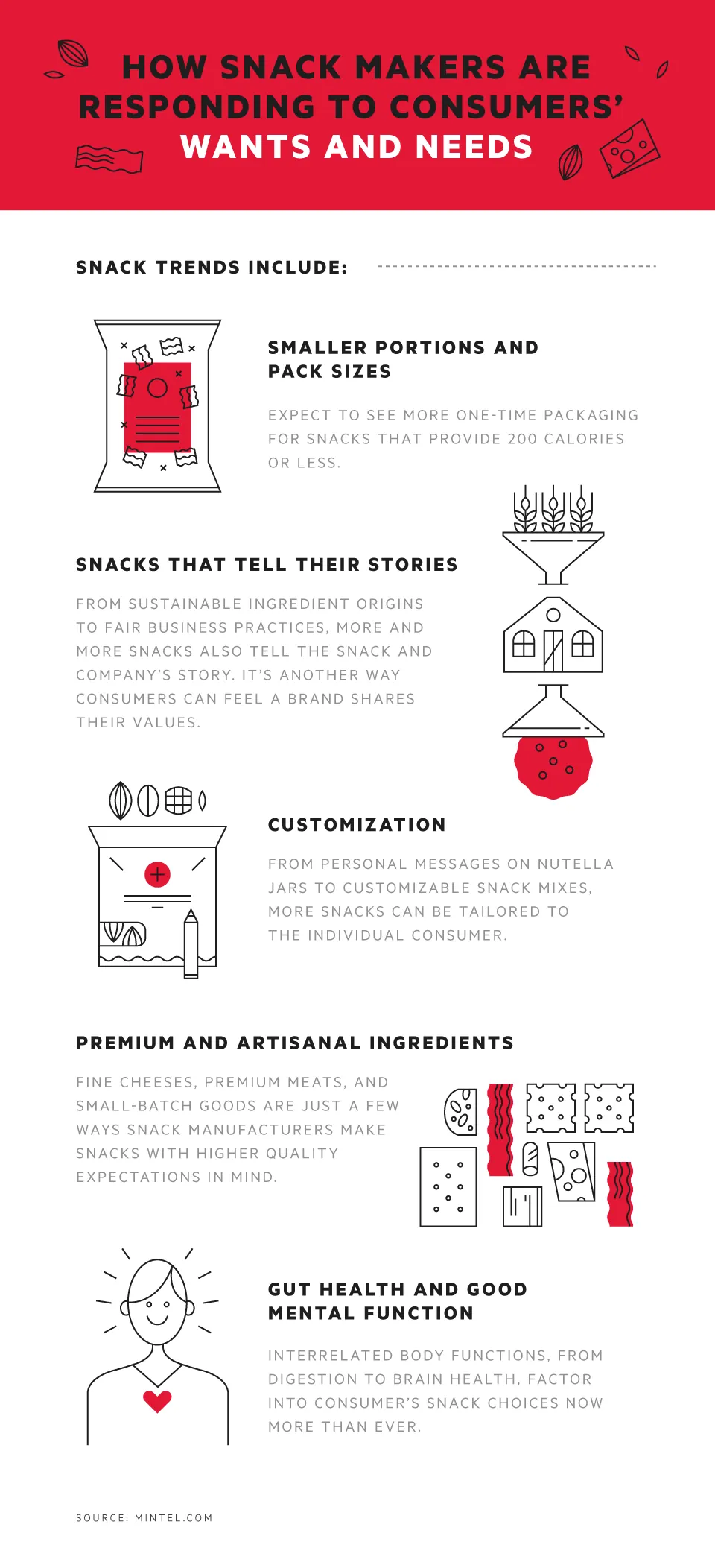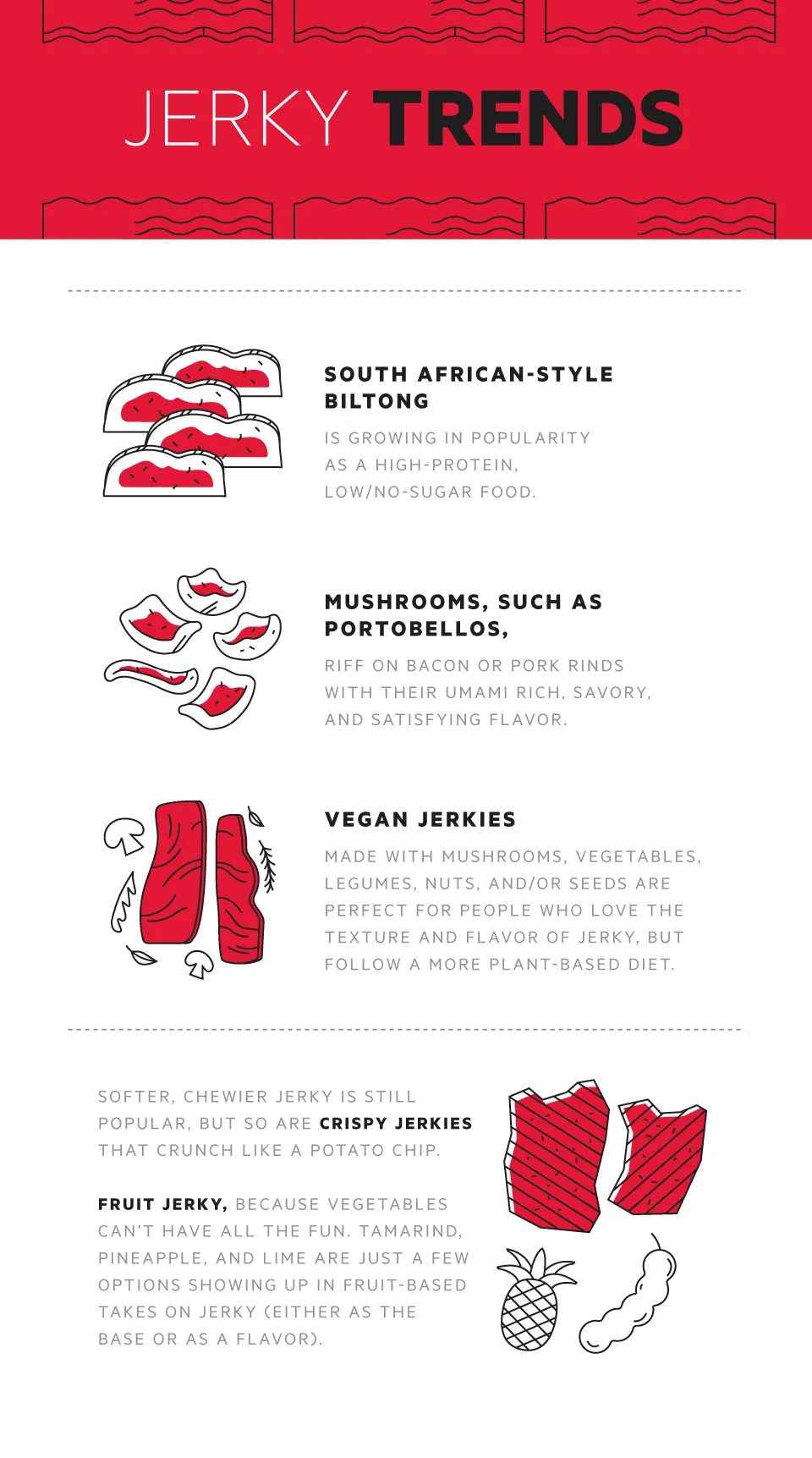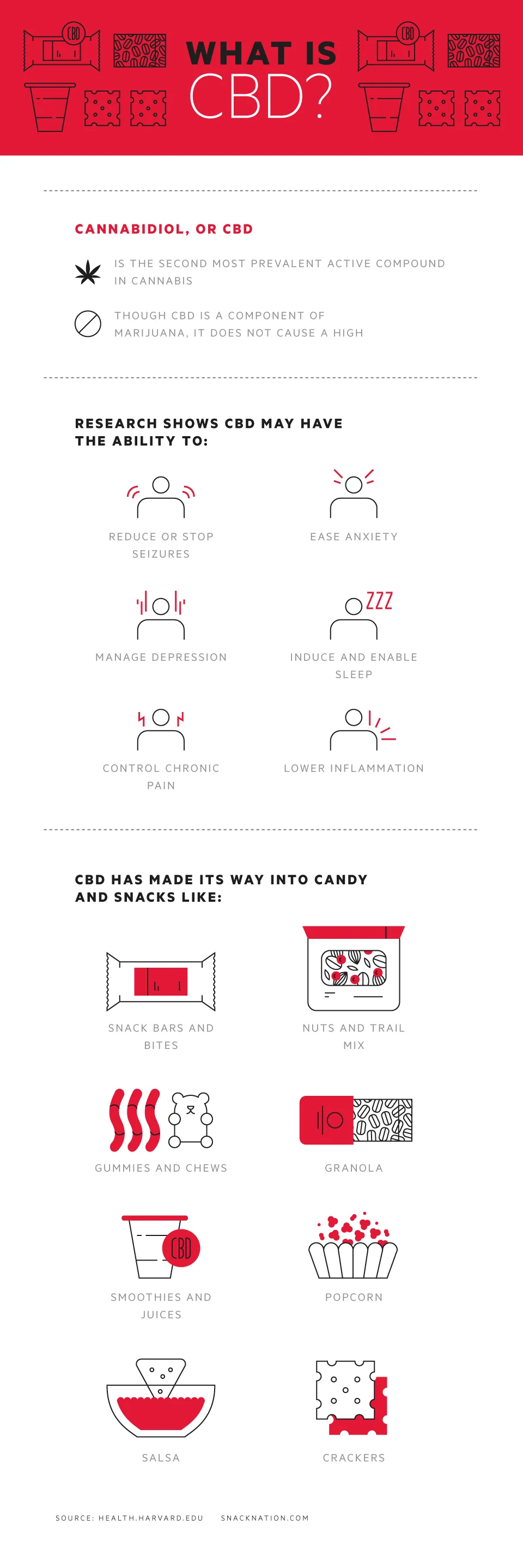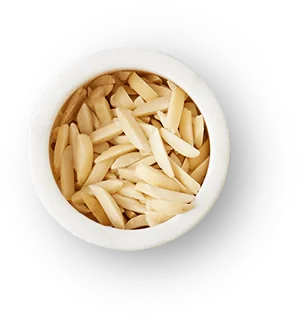If you’re hungry for it, you can snack on it.
That’s the good news from America’s $86 billion snack and candy industry. With sales of snacks ($51 billion) and candies/confectionery ($35 billion) reaching record levels, snacks are booming—and people are hungry for more. Americans enjoyed 386 billion ready-to-eat snack foods in 2018 alone, making snacks and candies America’s fourth-largest category for consumable goods.
Yet today’s consumer is motivated by more than mere appetite. People want snack options that fit their diets, lifestyles, and ethics. Snack companies are responding by going both broad and deep, continuously innovating to offer more types of snacks and candies made from an increasingly diverse ingredient palate. Today those new products alone make up nearly 5% of all snack sales.
Trends: Americans Want Snacks That Are Healthy, Indulgent, Sustainable, and Personal
A good meal is fine, but between-meal snack times are now a daily priority for 55% of American consumers—up 5% since 2016. However, people are also increasingly conscious and deliberate about their snacking choices. They want snack options that combine health, indulgence, and sustainability, but that also feel personal and match to their own tastes.

Smart Foods
Snacks are a daily part of people’s lives. And consumers want to focus on the benefits and enjoyment those snacks provide, not what they leave out. Snacks of yore used words such as “skinny,” “thin,” or “lean.” Those descriptions have given way to a new snack term: smart.
Rather than boast no- or low-fat, sugar, or salt, today’s smart foods focus on balance. Smart also means adaptable and innovative. Puffed quinoa in a chocolate bar? Plants replacing animal-based ingredients? Cauliflower replacing grains in chips or pizza crust? That’s exactly the sort of thing consumers consider smart.
Premium Jerky
Jerky is a convenient, lightweight, shelf-stable protein source. Far from a mere truck-stop treat, jerky options have become upscale and artisanal. Jerky styles are diversifying too with everything from vegan jerky made with mushrooms, vegetables, legumes, nuts, and/or seeds to crunchy, crispy jerky.

Snacks Made with Lower Sugar and/or Alternative Sweeteners
More and more snack makers have sought out a better balance of tasty treats that use less sugar per serving (or forgo regular cane or beet sugar all together) in favor of alternative sweeteners, such as:
- Honey
- Agave syrup
- Maple syrup
- Stevia
Snack-makers also leverage the tart and natural sweetness of fruits to get maximum flavor with minimal added sugar. Using fruit or stevia can help snack makers lower calorie counts—and decrease sugar by up to 85% depending on the snack.
You can buy sugar-free cookies, whether double chocolate chip, lemon, or peanut butter, in just about every flavor. For consumers who don’t like the taste of calorie-free sweeteners such as stevia, natural sweeteners (including honey and maple syrup) help snack makers cut back on refined sugar while maintaining a familiar sweetness many people love.
Collagen-Infused Snacks
Collagen can benefit skin health, muscle mass, and bone density. It’s also crucial for maintaining cartilage, tendons, ligaments, and even your heart. As our bodies age, we naturally produce less collagen.
Instead of buying collagen supplements, many consumers boost their collagen intake by way of snacks fortified with the protein. You can find collagen-infused bars, breads, muffins, and more.
Healthier Fruit Leather
Far from the rolled-up “fruit” you might have snacked on as a kid, today’s fruit leathers include more fruit, flavor, nutrients, and options. Whether in the form of bite-sized treats or larger sheets, fruit leathers are a great portable, shelf-stable snack.
At its most essential, fruit leather is pureed fruit that’s been gently dried to remove most of its moisture, which gives fruit leather a bendable, chewy texture and flavor. The drying process also naturally concentrates flavors, so fruit leathers usually don’t need much additional sweetening.
As a plus, fruit leather can add a bit of childhood nostalgia to snack time. The flavors, though, are diversifying and growing up. In addition to standards such as apricots, berries, or apples, you can also find tropical fruits such as mangoes or even mixes that add vegetables such as beets, kale, carrots, or spinach.
Snacks Made with Recovered Ingredients
From consumers to farmers to snack makers, food waste is a major concern nationwide. Many food companies are looking at how to “up-cycle” foods and crops, such as spent brewing barley, avocado pits, or crushed wine grapes, enabling those items to stay out of the waste stream. Some of these snacks include:
- Raisins made from wine grapes
- Bars made with spent barley or other recovered grains
- Beverages made from avocado pits
Snack foods may also use “ugly produce” that is safe and edible but lacks the visual appeal often demanded by American consumers. By producing snack foods from recovered ingredients, snack makers can whip up tasty treats while also reducing food waste.
Cannabidiol (CBD)-Infused Snacks and Candies
In states such as Washington, Oregon, and Colorado where recreational cannabis is legal sales of CBD-infused candies have skyrocketed to 11% of the total candy market. 2017 alone saw a 170% increase (by comparison, candy on the whole saw a 51% increase).
CBD is turning up in an ever-broadening range of wellness drinks and foods. The CBD market could grow to a projected $260 million by 2021 and up to $600 million by 2025. You can expect to see more CBD-infused snacks in the near future.

Healthy High-Fat Foods
Not too long ago, people associated health snacks with terms like low fat or fat free. Now, with a greater medical and scientific understanding of the role of fats in wellness, high-fat foods can be both delicious and healthy.
MCT oil, coconut butter, and nut butters are just a few healthy fat sources showing up in high-fat snacks. These foods also serve consumers who follow high-protein, high-fat, low-carb diets such as grain-free, paleo, and keto.
Instead of using grains, healthy high-fat foods focus on seeds, nuts, and oils. Sweetness comes into play from lower-calorie sweeteners such as stevia, monk fruit, and the sugar alcohol erythritol. Whether cheese bites, nut butter cookies, or butter coffees, high-fat snacks have come to make fat, phat.
Marine Snacks
Sea green snacks have moved beyond snacking nori. Seaweed, algae, kelp, water lily, and other sea-grown plants have made their way into a range of marine snacks that is as broad and deep as the sea.
Kelp is made into noodles and jerky. Seaweed butters enhance foods with umami-rich flavor. Water lily seeds can be puffed into crunchy snacks. And snack makers work varieties of algae and other seaweeds into snack foods, bumping up nutrition and offering the briny, savory goodness associated with ocean-grown plants.
Tasty Times Ahead for Snack Lovers
The future of snack foods is bright, diverse, and full of flavor.
Instead of having to stick to soul-sucking health foods or feel guilty about indulging in rich snacks, today’s consumer can find a range of snack foods that fits their personal balance of wellness and indulgence. The growing range of snack foods available will not only benefit the appetite but also the soul, society, and Mother Earth.


